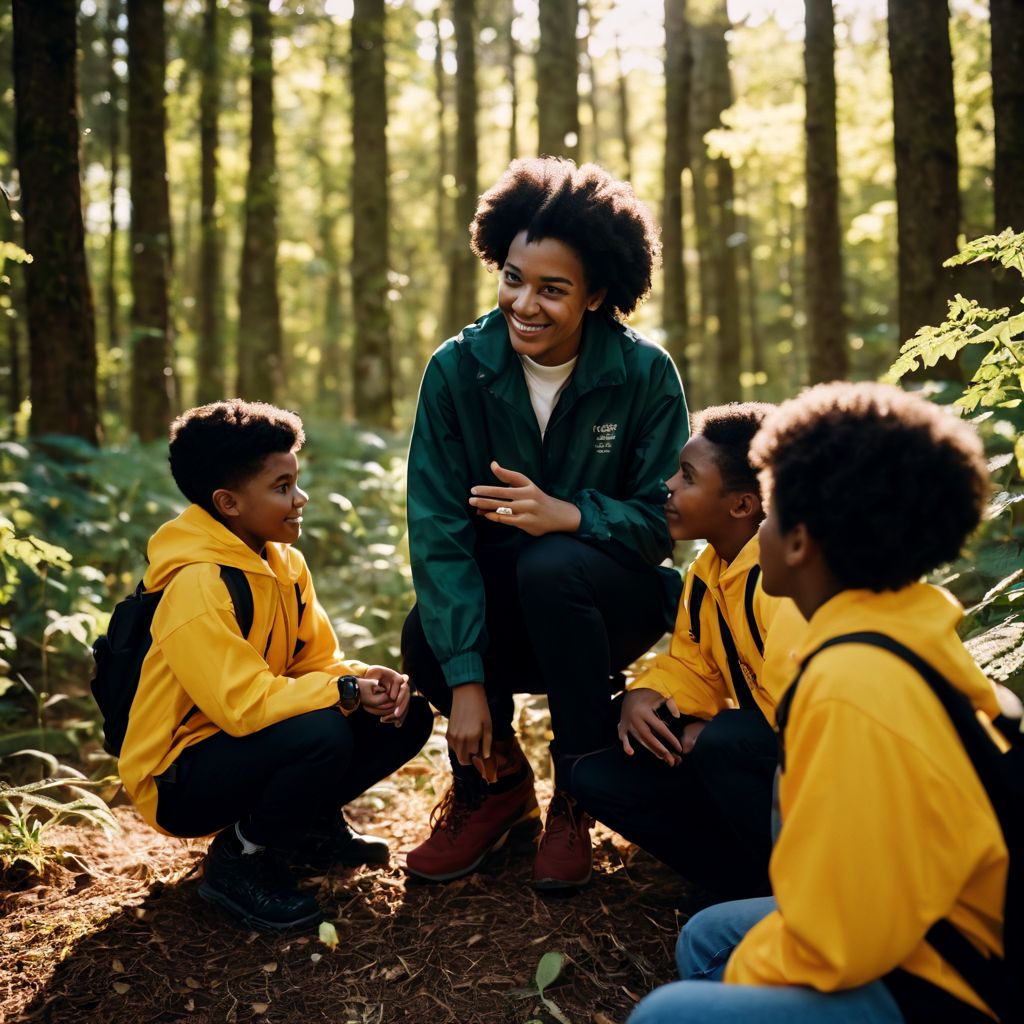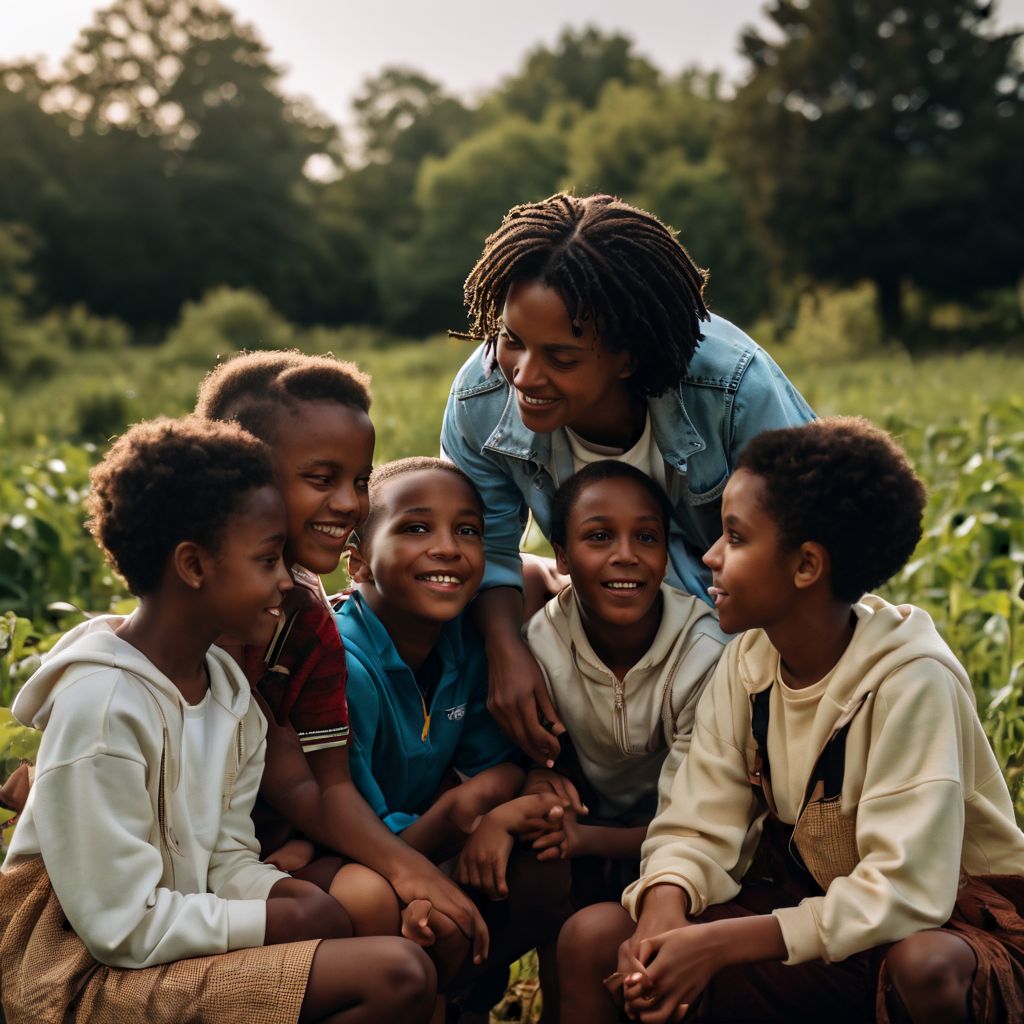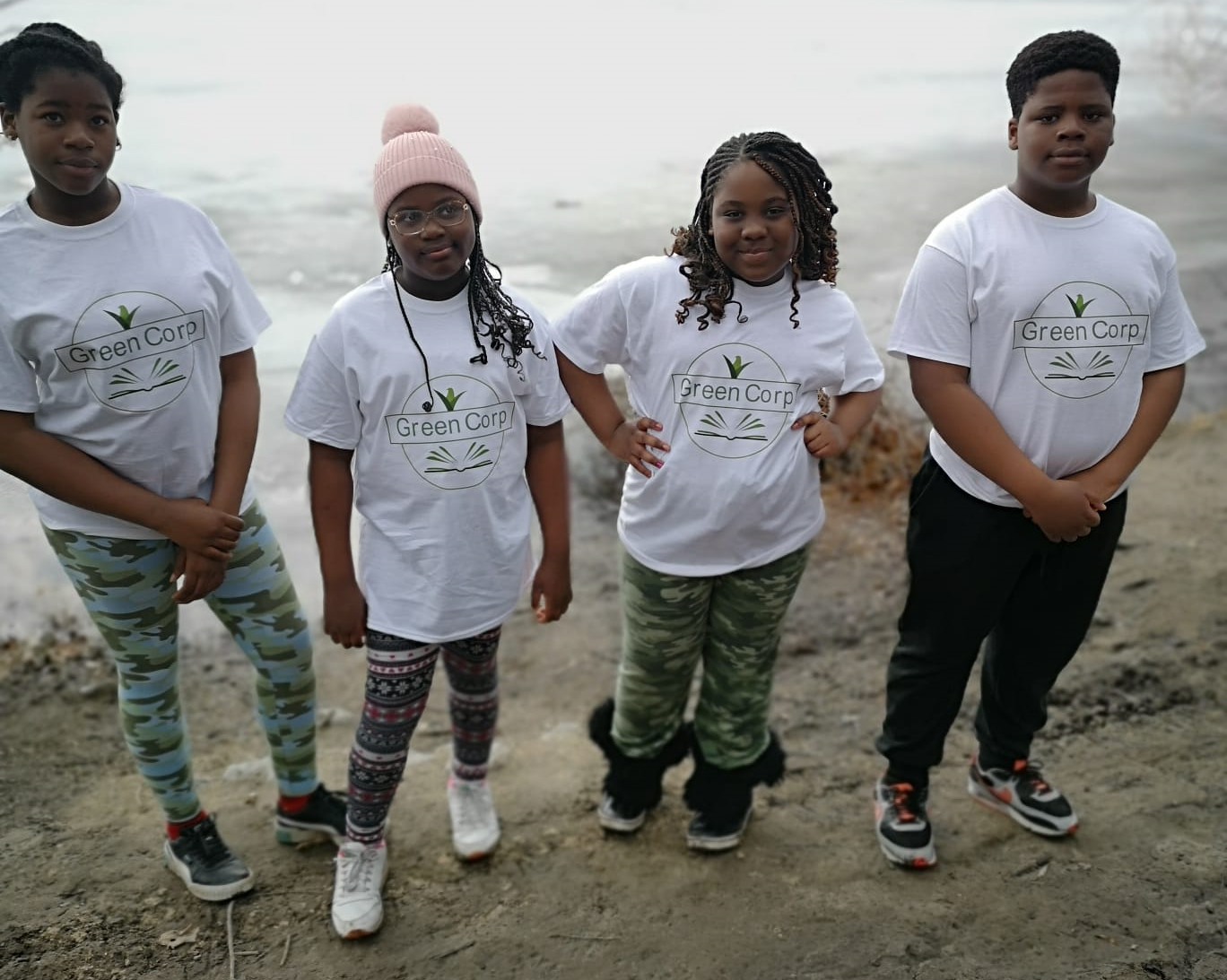
Experiential Environmental Literacy

Indigenous Knowledge Awareness

Environmental Problems: Mitigation through environmental education action
We provide environmental literacy nurtured by research for children and youths from African diaspora communities
Environmental conditions across the globe continue to deteriorate at an alarming rate due to a complex web of social-ecological challenges including, but not limited to, climate change, air and water pollution, ocean acidification, land degradation, and biodiversity loss (Barnosky &
Hadly, 2016). Resource exploitation and Economic activities also have put a lot of stress on the global environment. To remedy this impending doom, environmental education at the formative stage is necessary to transform the behavior of our children in relation to human/nature relationship. Unfortunately, the environmental education curriculum is not well equipped to adequately be a conduit for behavior transformation.
To have a clear understanding of Environmental Education, Ardoin & Bowers (2020) managed to assemble different concepts of environmental education from various environmental education theorists:
Environmental education represents “an approach, a philosophy, a tool, and a profession” (Monroe, Andrews, & Biedenweg, 2008, p. 205), with the aim of creating an environmentally literate citizenry well-suited to address environment and resource sustainability issues (UNESCO, 1978; Wheaton, Kannan, & Ardoin, 2018a). Through developing attitudes, values, knowledge, dispositions, and skills to undertake pro-environmental actions, environmental education fosters engagement in enhancing the sustainability of human-nature interactions over time (Mastr´ angelo et al., 2019; Monroe, 2003; UNESCO, 1978). Environmental education is relevant throughout the life course, from infancy through senior citizenship, in formal and nonformal venues (Leal Filho, Mifsud, & Pace, 2018; UNESCO, 1978).
According to research, early exposure to environmental education has a lifelong impact on adults (Gough, Walker, & Scott, 2001; Otto & Kaiser, 2014; Wals & Benavot, 2017).Thus, environmental education equips individuals with the necessary critical thinking skills to make
decision not only as individuals, but also within communal settings, additionally, it provides the knowledge base and expertise for individuals to interrogate human social and economic behaviors that (re)produce and reinforce environmental degradation and ecological disharmony.
Suffice to say that experiential environmental education particularly at formative years is exceptionally crucial for the development of a favorable attitude towards the environment and environmental literacy.
On these premises, therefore, Green Corp’s environmental program/activities aims to develop in children and young adults the following outcome:
● Develop environmental literacy
● Improved human-nature relationship
● Developing basic appreciation to natural world
● Favorable environmental attitude
● Ecological awareness
● Participation in environmental issues and advocacy
● Toward becoming environmentally responsive youth and adults
Our nature-based environmental learning experiences programs, for example, can provide direct, nature-rich experiences with a range of objectives, including developing basic appreciation for the natural world. Green Corp environmental education program for children and young adults encourages them to take action for a positive change. Engaging children and
young adults in meaningful, relevant environmental learning experiences, helps in developing a local, regional, and global community of environmentally active people, who care deeply about their environment and are willing to engage in social actions that address environmental problems in their community / locality.
Indigenous Knowledge Awareness
At Green Corp, we subscribe to the notion that Environmental Education requires an interdisciplinary and multidimensional approach. For that reason, Indigenous knowledge perspectives on environment and ecological sustainability should complement the dominant mainstream perspectives ( that is the western approaches). Indigenous knowledge, or sometimes referred as traditional knowledge, ecological knowledge, local knowledge are knowledge systems embedded in the cultural traditions of local or
indigenous communities. This knowledge reflects their unique cultures, languages, values, histories, spirituality, and being in relationship with the natural world. In a broader view, this knowledge shapes their worldview and how they interact with the natural environment. Therefore, It is pertinent that environmental discourse does not exclude the ways Indigenous communities relate to their environment (Alokwu & Ezenwaji, 2015). To acknowledge the importance of Indigenous knowledge, the World Commission on Environment and Development (the Brundtland Report), referred to the way of life of Indigenous people as harmonious to nature and more amenable to ecological sustainability (World Commission on Environment and Development, 1987). Similarly, in his opening address to the United Nations Conference on Environment and Development in 1992 Rio de Janeiro Earth Summit, Maurice Strong advised that “we must reinstate in our lives the ethic of love and respect for the earth which the traditional peoples have retained as central to their value system” (United Nations, 1993).
From the above assertion of a world respected body, it is fair to judge Indigenous knowledge as ecologically friendly and sustainable, that said, it is reasonable that western scientific knowledge (as it likes to be referred), draws from the rich ecological perspectives of Indigenous knowledge to help build a more ecologically sustainable society. As the world faces serious environmental challenges, such as environmental degradation, unsustainable extraction of the earth’s resources, and pursuit of lifestyle and unsustainable economic development inimical to a
sustainable future, there is the need however, to articulate its relevance in environmental management and development discourse in general.
Not minding the unequal power relations between Indigenous knowledge and Western scientific knowledge, and the perceived superiority of Western science over Indigenous knowledge systems, all of these stemming from the colonial construct of Indigenous peoples and their knowledge, we in Green Corp, as much as Posey & Graham (1996) caution that Indigenous knowledge and Western science need not to be seen or thought as opposites, rather, we should device creative ways of integrating, as well as synergize the two knowledge systems, so that they can complement one another. By doing so, ecological insights derived from Indigenous practices, in synergy with Western scientific approach can go a long way to reduce our current ecological problems and perhaps, lead us to a more ecological
sustainable future.
Based on the foregoing, Green Corp’s Environmental Education program is approached from the holistic point of view by way of creatively integrating Indigenous knowledge ecological viewpoints and Western scientific approach, thus, enabling our program to serve diverse
students from diverse cultural backgrounds. Participants in our environmental education program are encouraged to bring their cultural environmental stories and ecological beliefs, this multidimensional approach enriches our program and at the same time gives our young
participants a greater sense of belonging and satisfaction.
Apart from incorporating Indigenous Knowledge perspectives into our environmental education program, Green Corp’s environmental education program teaches young people to be allies of Indigenous people by supporting their causes, such as Indigenous sustainability, Indigenous
resource control, Indigenous ways of knowing, Indigenous advocacy for self-determination, and actions promoting social justice and equity for Indigenous people. To promote ecological harmony and global peace, Environmental Education must not shy away from addressing beliefs, biases and prejudices that re/produce injustice, discrimination, and inequity. In addition, attitudes and lifestyles that produce environmental degradation/problems must be interrogated without any fear of being confrontational. It is reasonable however, to posit that environmental
education, through an interdisciplinary lens can provide opportunities to deeply understand interconnected strands impinging upon ecological harmony and global justice, rather than isolated categories.
Environmental Problems: Mitigation through environmental education action
The last four decades have witnessed a gradual and sometimes alarming depletion or outright extinction of Indigenous species around the world. For example, in the rainforest southeast, Nigeria, many local Indigenous plants, economic trees, and medicinal shrubs, namely ukwa, mmimi, ugba, udara, ube and many more are close to being endangered or close to disappearing in the ecosystem. Therefore, the way of life and the intergenerational equity in these Indigenous communities are at the point of no return, and this poses a great challenge to their viability and sustainability as a people. Unfortunately, government agencies are not doing enough to revamp or renew or regenerate these important plant resources.
Their lack of action, as a result of corruption, lack of determination, inadequate policy framework and perhaps lack of
resources to embark on this important project may eventually result in the complete extinction of these important plant resources. To mitigate the demise of these important plant resources, Green Corp is partnering with local organizations in southeast Nigeria to renew some Indigenous plants. The species renewal projects are expensive and capital intensive, notwithstanding our limited resources, we are trying to make a difference, no matter how small it may be. The southeast Nigeria scenario is just a minute example in terms of the loss of Indigenous species around the globe. Many Indigenous communities the world over are saddled with this problem, which adversely affects their means of livelihood. As a project that we are passionate about, Green Corp uses this opportunity to appeal to international organizations, government agencies and private corporations to participate in resource renewal projects by funding these projects around the world, because the earth’s species diversity considerably depends on gradual renewal of depleted Indigenous plant materials.
References
Ardoin, N. M., & Bowers, A. W. (2020). Early childhood environmental education: A systematic review of the research literature. Educational Research Review, 31, 100353.
Gough, S., Walker, K., & Scott, W. (2001). Lifelong Learning: Towards a Theory of Practice for Formal and Non-formal Environmental Education and Training. Canadian Journal of Environmental Education, 6, 178-196.
Leal Filho, W., Mifsud, M., & Pace, P. (Eds.). (2018). Handbook of lifelong learning for sustainable development. Springer International Publishing.
Mastrángelo, Matías E., Natalia Pérez-Harguindeguy, Lucas Enrico, Elena Bennett, Sandra Lavorel, Graeme S. Cumming, Dilini Abeygunawardane et al. “Key knowledge gaps to achieve global sustainability goals.” Nature Sustainability 2, no. 12 (2019): 1115-1121.
MATSUMOTO, K., TAKENO, K., KISHIOKA, T., URATA, M., MATSUBARA, M., KATO, T., … & HAYAKAWA, K. (2022). Educational Effects and Changes in Children’s Appreciation of Nature through Community-based Education: A Case Study of Satoumi Learning in Japan. American Journal of Educational Research, 10(5), 323-331.
Monroe, M. C., Andrews, E., & Biedenweg, K. (2008). A framework for environmental education
strategies. Applied Environmental Education & Communication, 6(3-4), 205-216.
Obiora, A. C., & Emeka, E. E. (2015). African indigenous knowledge system and environmental
sustainability. International Journal of Environmental Protection and Policy, 3(4), 88-96.
Orr, D. W. (2015). Ecological literacy. In Thinking about the environment (pp. 227-234). Routledge.
Orr, D. (2013). Place and Pedagogy. NAMTA Journal, 38(1), 183-188.
Otto, S., & Kaiser, F. G. (2014). Ecological behavior across the lifespan: Why environmentalism increases as people grow older. Journal of Environmental Psychology, 40, 331-338.
Parkin, D. (1998). Is outdoor education environmental education?. Environmental Education and
information, 17, 275-286.
Posey, D. A., & Dutfield, G. (1996). Beyond intellectual property: toward traditional resource rights for indigenous peoples and local communities. IDRC.
Priest, S. (1988). Outdoor leadership around the world: A matter of semantics. Journal of Adventure
Education, 5(1), 9-12.
UNESCO, U. (1977, February). The Tbilisi Declaration. In Intergovernmental Conference on
Environmental Education (pp. 14-26). Tbilisi, Georgia: USSR.
United Nations (1993). Report of the United Nations Conference on Environment and Development, Rio
de Janeiro, 3-14 June 1992, Vol.11: Proceedings of the Conference: New York: United Nations.
Wals, A. E., & Benavot, A. (2017). Can we meet the sustainability challenges? The role of education and lifelong learning. European Journal of Education, 52(4), 404-413.
WCED, S. W. S. (1987). World commission on environment and development. Our common future, 17(1),
1-91.
Wheaton, M., Kannan, A., & Ardoin, N. M. (2018). Pathways in environmental literacy (Environmental
Literacy Brief, Vol. 2).
World Commission on Environment and Development (1987). Our Common Future: Oxford University
Press.

